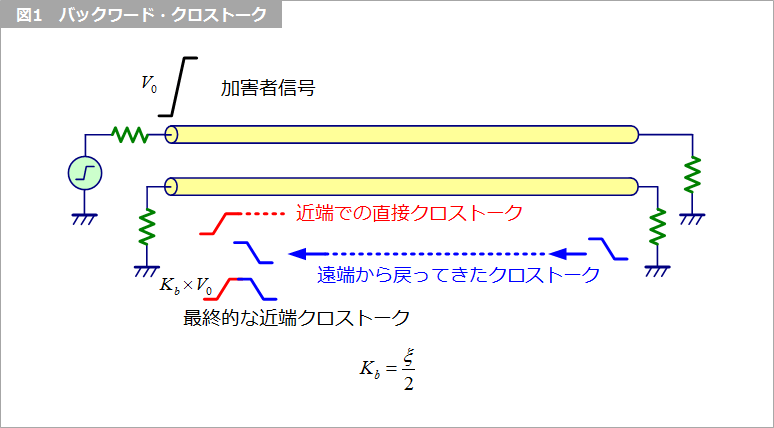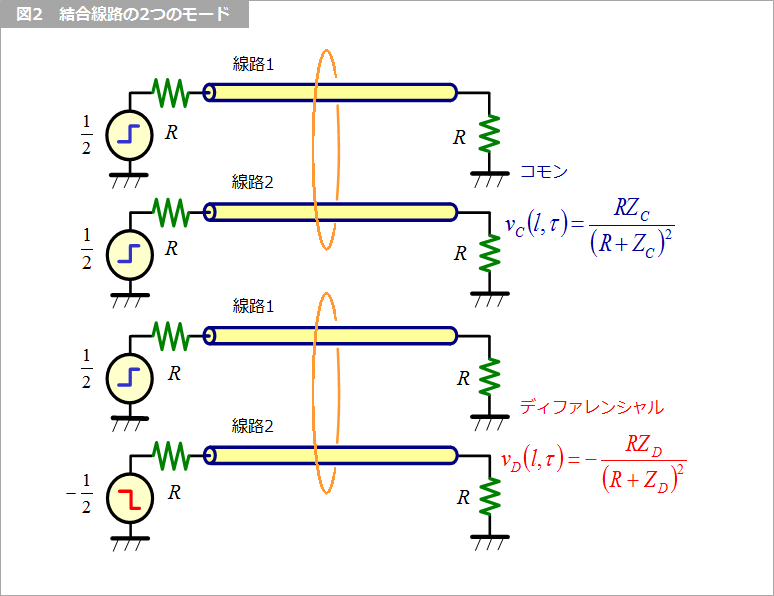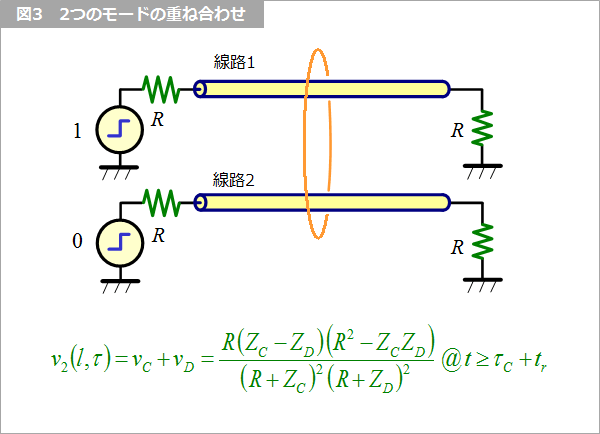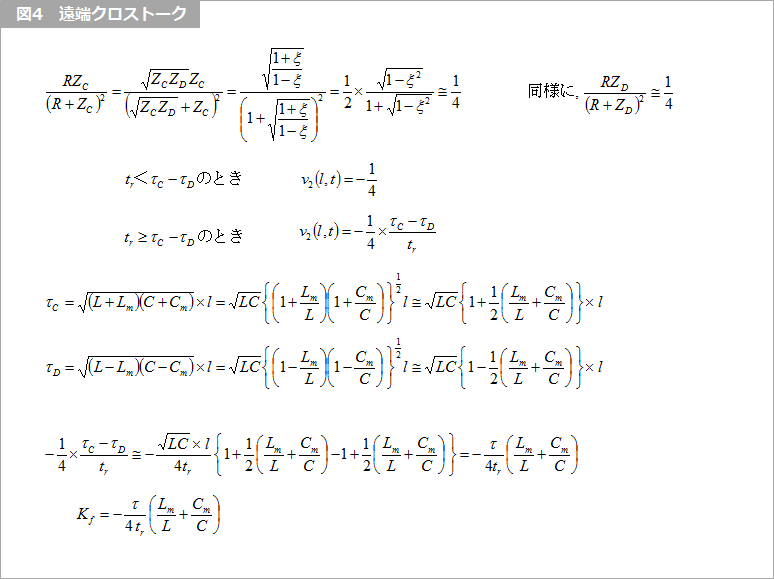For quite some time, the crosstalk coefficients have been defined as the backward crosstalk coefficient Kb at the near end and the forward crosstalk coefficient Kf at the far end.
Backward crosstalk coefficient Kb (near end)
Near-end crosstalk, as shown in Figure 1, first occurs at the timing of the rise of the signal on the offender line, depending on the crosstalk coefficient. Reverse crosstalk returning from the far end then overwrites the original crosstalk, resulting in crosstalk with a pulse width equivalent to the round trip time of the signal. The term "backward" is taken to mean this backward crosstalk coming back, but it's a somewhat unclean definition. This returning crosstalk differs from reflection because it returns even with a matched termination at the far end. I will discuss this matter on another occasion.
If the near-end is matched terminated, the ratio of the crosstalk amplitude to the aggressor signal amplitude is Kb. Kb and the basic crosstalk coefficient ξ mentioned last time have a relationship of Kb=ξ/2.
Please also refer to the previous column "The nature of the crosstalk coefficient".

Forward crosstalk factor Kf (far end)
This is literally the factor of crosstalk at the far end due to forward traveling signals.

Previously, near-end crosstalk was obtained by superposition (theory of superposition), but when the common mode and differential mode in Fig. 2 are superimposed, as shown in Fig. 3, a signal with an amplitude of 1 is applied to line 1, It is possible to obtain the state in which nothing is added to line 2. The far-end voltage is the difference between vC and vD obtained in Figure 2. Here, choosing R=√(ZC×ZD) results in zero far-end crosstalk. (Footnote 1)

However, the common and differential modes have different delay times. (Footnote 2)
Therefore, at the far end the differential mode signal arrives first, followed by the common mode signal. Let the delay time of each mode be τC for common and τD for differential. (τ: small Greek letter tau)
When the signal rise time tr is less than the difference between τC and τD, τC - τD, the far-end crosstalk is 1/4. (Footnote 3)
If tr is greater than τC - τD, Kf is proportional to τC - τD and inversely proportional to the rise time of the signal. Calculating this in detail, Kf is proportional to the line delay time τ and inversely proportional to the signal rise time, as shown in Figure 4. Its coefficient is (Lm/L+Cm/C)/4. Note that here, Cm < 0, so the numbers in ( ) are subtractions.

Footnote 1
A termination resistor that satisfies this condition is called a hyperbola termination. Double termination, as in this case, is a special case. For details, please refer to the following documents.
Footnote 2
For example, there is a difference of about 6.7ns/m for common and 6.4ns/m for differential. This is for the surface layers of the board, there is no delay difference for the middle layers. Therefore, the far-end crosstalk described here does not occur in the case of the middle layer. In fact, far-end crosstalk occurs even in the middle layer. I will talk about this on another occasion.
Footnote 3
It is interesting that the far end crosstalk is 1/4 regardless of the crosstalk coefficient, but in actual use with a wiring length of 10cm, the difference between τC and τD is about 30ps, so tr < τC - τD. Not much to do.
References
How to find crosstalk by superposition
Hideming Zhou : "Crosstalk in Printed Circuits" p.37, EMC1990.2.5 / p.28, EMC1990.3.5 / p.61, EMC1990.4.5
hyperbola termination
click on Yuzo Usui for videos
All About Distributed Parameter Circuits for Board Designers (3rd Edition)
Self-published, pp. 124-130, 2016
What is Yuzo Usui's Specialist Column?
It is a series of columns that start from the basics, include themes that you can't hear anymore, themes for beginners, and also a slightly advanced level, all will be described in as easy-to-understand terms as possible.
Maybe there are other themes that interest you!
